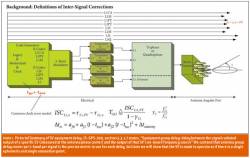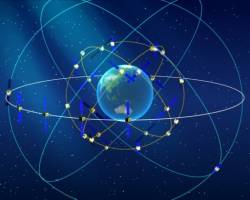November 25, 2008
 One of 12 magnetograms recorded at Greenwich Observatory during the Great Geomagnetic Storm of 1859
One of 12 magnetograms recorded at Greenwich Observatory during the Great Geomagnetic Storm of 1859 1996 soccer game in the Midwest, (Rick Dikeman image)
1996 soccer game in the Midwest, (Rick Dikeman image) Nouméa ground station after the flood
Nouméa ground station after the flood A pencil and a coffee cup show the size of NASA’s teeny tiny PhoneSat
A pencil and a coffee cup show the size of NASA’s teeny tiny PhoneSat Bonus Hotspot: Naro Tartaruga AUV
Bonus Hotspot: Naro Tartaruga AUV Pacific lamprey spawning (photo by Jeremy Monroe, Fresh Waters Illustrated)
Pacific lamprey spawning (photo by Jeremy Monroe, Fresh Waters Illustrated) “Return of the Bucentaurn to the Molo on Ascension Day”, by (Giovanni Antonio Canal) Canaletto
“Return of the Bucentaurn to the Molo on Ascension Day”, by (Giovanni Antonio Canal) Canaletto The U.S. Naval Observatory Alternate Master Clock at 2nd Space Operations Squadron, Schriever AFB in Colorado. This photo was taken in January, 2006 during the addition of a leap second. The USNO master clocks control GPS timing. They are accurate to within one second every 20 million years (Satellites are so picky! Humans, on the other hand, just want to know if we’re too late for lunch) USAF photo by A1C Jason Ridder.
The U.S. Naval Observatory Alternate Master Clock at 2nd Space Operations Squadron, Schriever AFB in Colorado. This photo was taken in January, 2006 during the addition of a leap second. The USNO master clocks control GPS timing. They are accurate to within one second every 20 million years (Satellites are so picky! Humans, on the other hand, just want to know if we’re too late for lunch) USAF photo by A1C Jason Ridder.  Detail of Compass/ BeiDou2 system diagram
Detail of Compass/ BeiDou2 system diagram Hotspot 6: Beluga A300 600ST
Hotspot 6: Beluga A300 600ST1. Alaska to New Zealand
EXTREME FLIGHT
Meet the world’s endurance champions— bar-tailed godwits. One of these migrating shorebirds, “E7,” made an unprecedented nonstop Pacific Ocean flight from Alaska to New Zealand. USGS researchers tracked her using a battery-powered transmitter and satellite telemetry. She flew 7,200 miles in eight days without rest or food, using energy at 8 times her Basal Metabolic Rate. Read the story in October’s Proceedings of the Royal Society: B.
1. Alaska to New Zealand
EXTREME FLIGHT
Meet the world’s endurance champions— bar-tailed godwits. One of these migrating shorebirds, “E7,” made an unprecedented nonstop Pacific Ocean flight from Alaska to New Zealand. USGS researchers tracked her using a battery-powered transmitter and satellite telemetry. She flew 7,200 miles in eight days without rest or food, using energy at 8 times her Basal Metabolic Rate. Read the story in October’s Proceedings of the Royal Society: B.
2. Tampa, Florida USA
HIT AND MISS
Tampa Tribune reporters decided to find out why police couldn’t locate a kidnapped woman after she called 9-1-1: Her cell phone was too old. Most new phones have GPS. But some use triangulation – which requires several well-positioned towers. Plus, getting a fix takes time. And about half of U.S. 911 call centers haven’t upgraded their computer systems yet, says CTIA, the wireless industry group.
3. Essex, England
MAN OVERBOARD!
An Essex, UK start-up, Sci-Tech Systems Ltd., run by East Anglian sailing enthusiasts, won the top Galileo Masters Award and two other prizes at the 2008 European Satellite Navigation Competition on October 21 in Munich. They designed a tracking system that quickly locates someone who has fallen overboard a ship. It works with existing maritime navigation systems.
4. Baikonur, Kazakhstan
CHRISTMAS PRESENT
Three more GLONASS satellites will launch from Baikonur space center on December 25, says Russian state news agency RIA Novosti. Seventeen are now “set healthy.” The system requires 18 satellites to cover the Federation, and 24 satellites for global coverage. Roscosmos chief Anatoly Perminov said in September that GLONASS would have 30 satellites by 2011.
5. Krasnoyarsk, Russia
BUILDING BRIDGES
Russian Prime Minister Putin announced the “first project of practical application of GLONASS in the national economy” during an October visit to Krasnoyarsk, reported news agency Itar-Tass. GLONASS will be used to monitor construction, operations, and weather conditions on a new bridge over the Yenisei, the world’s fifth largest river. Data gathered from sensors on the bridge will be accurate to one or two millmeters.
6. Beijing, China
BEIDOU’S SECOND WIND
China plans to launch 10 Compass satellites during the next two years — starting as early as December 2008 — in order to create a regional PNT capability in the Asia-Pacific region by 2010. China’s GNSS plans have been out of public view for a while — this announcement was quietly revealed on November 5 at Stanford University’s “PNT Challenges and Opportunities Symposium.”
By Alan Cameron
 Figure 1
Figure 1


















